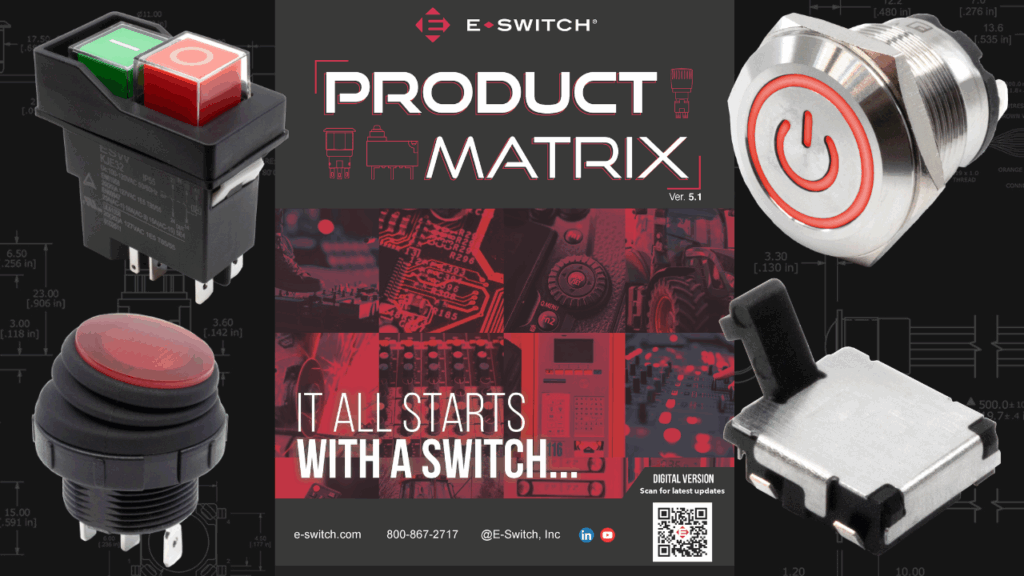
New E-Switch Products and Digital Catalog Updates
E-Switch offers one of the broadest switch lines available today, and the lineup grows each month with the release of a new product. Stay up to date with the latest releases right here!

E-Switch offers one of the broadest switch lines available today, and the lineup grows each month with the release of a new product. Stay up to date with the latest releases right here!
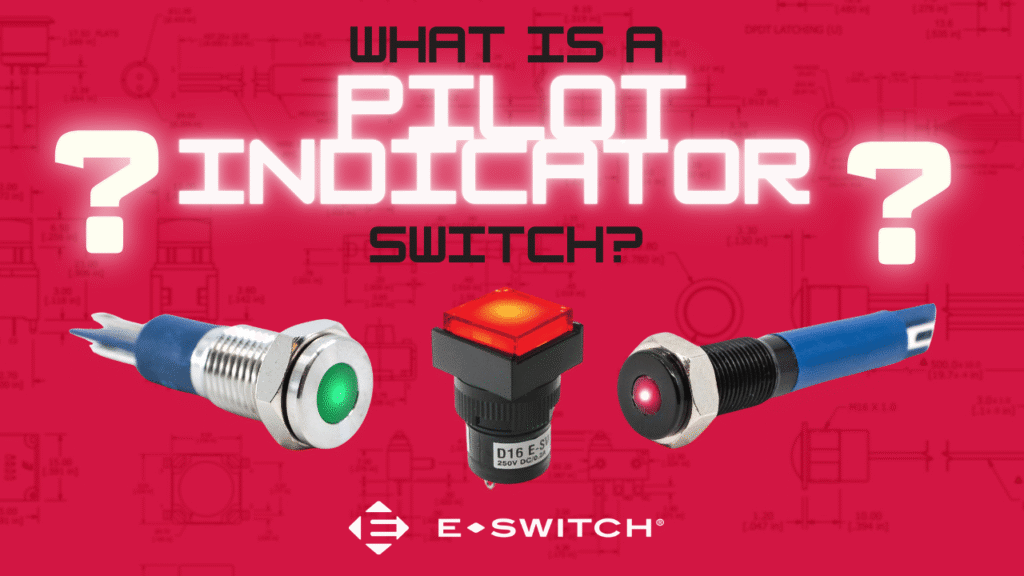
Pilot light indicator switches offer a simple yet effective way to enhance safety, convenience and energy efficiency in various electrical systems and environments.

Introducing the latest innovation from E-Switch: the LS25 Series high current snap action switch. Watch the video, view the data sheet and configure your own!
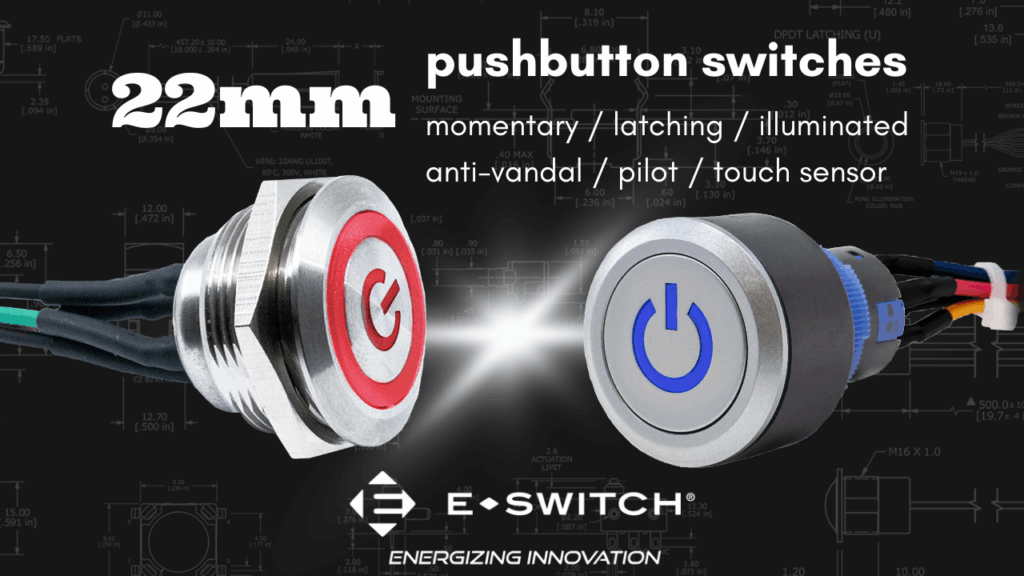
The 22mm panel cutout size provides a unique balance of durability, ergonomics and aesthetic appeal for pushbuttons. Learn more about E-Switch’s complete selection.
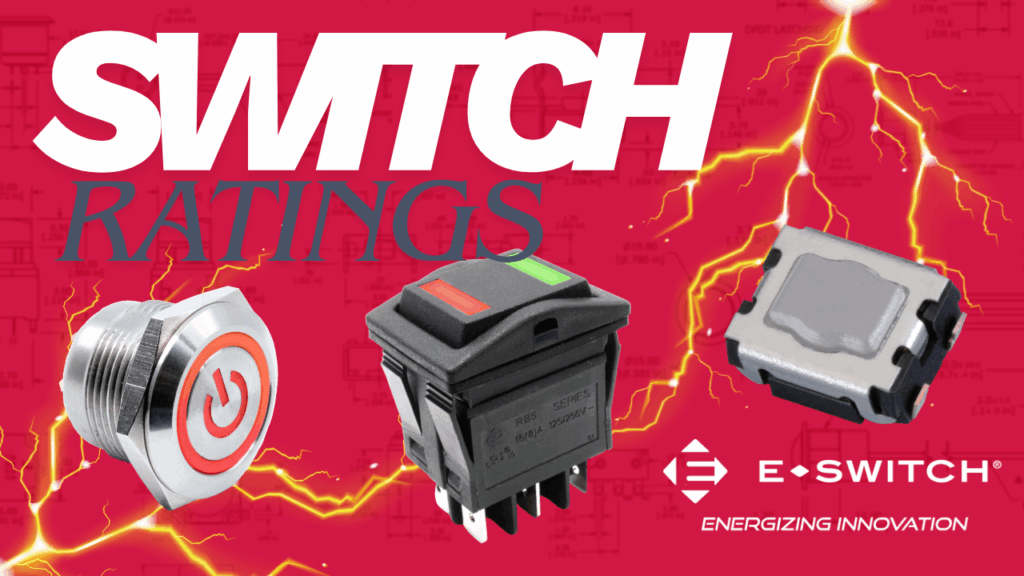
Electromechanical switches are typically designed to handle low, medium or high voltages. Let’s explore which switch types cater to higher currents and demanding devices.
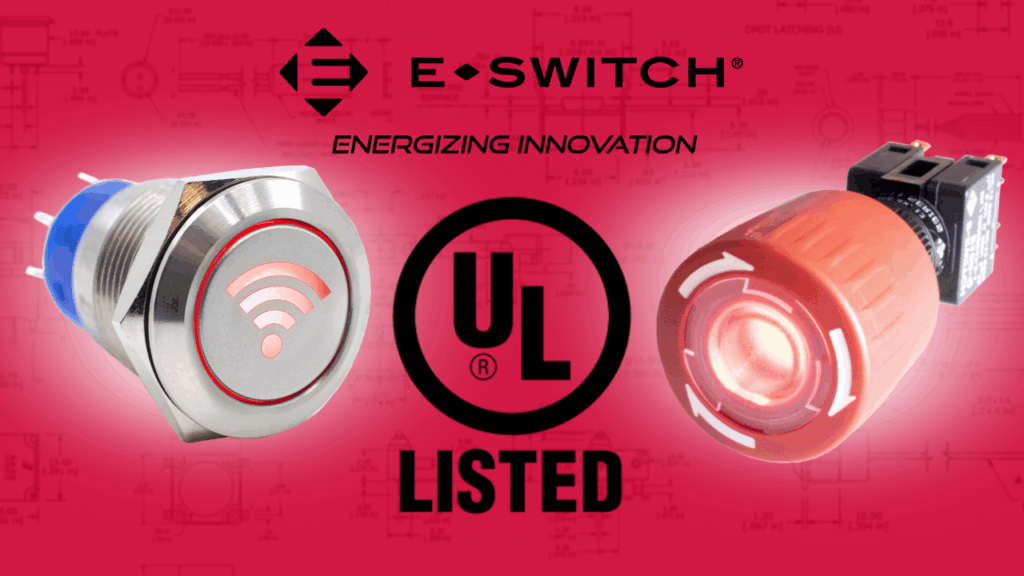
UL listed switches are certified to meet rigorous safety and performance standards, giving manufacturers and users the advantage of proven reliability and regulatory compliance.
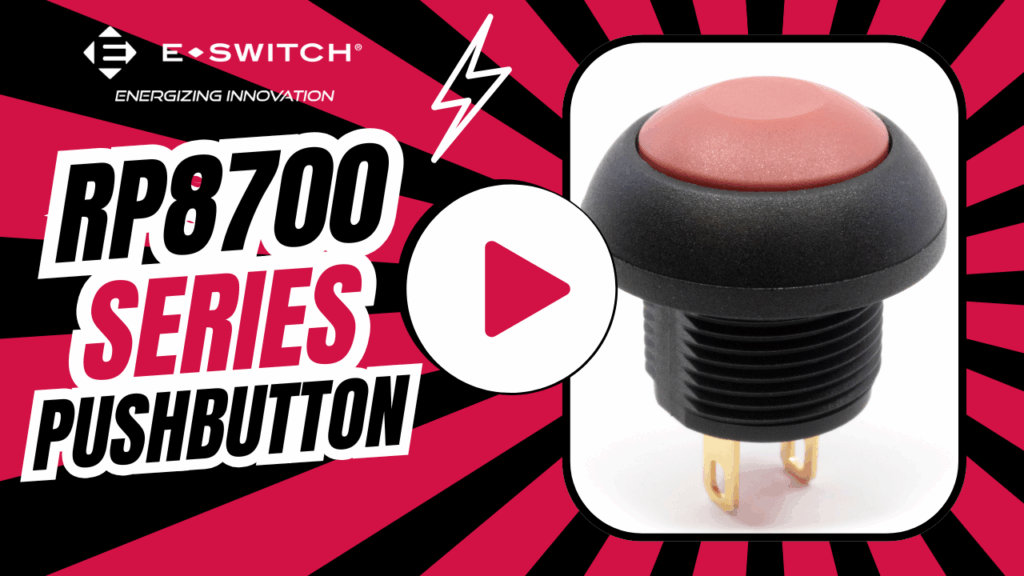
Introducing the latest innovation from E-Switch: the RP8700 Series round, illuminated pushbutton switch. Watch the video, view the data sheet and configure your own!
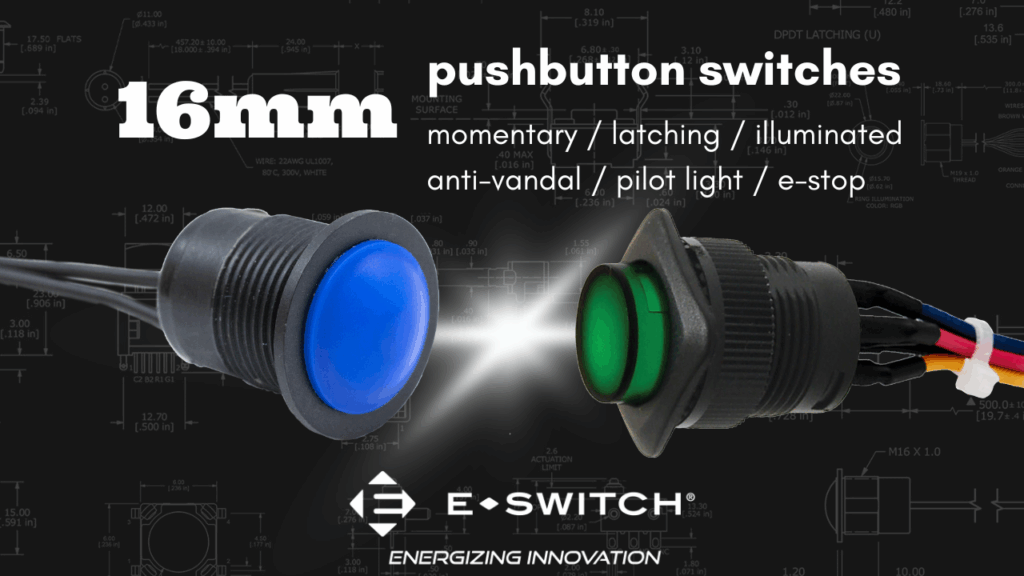
The 16mm cutout size strikes a balance between compactness and usability. It’s an ideal size for panels with limited space that require sleek design options.
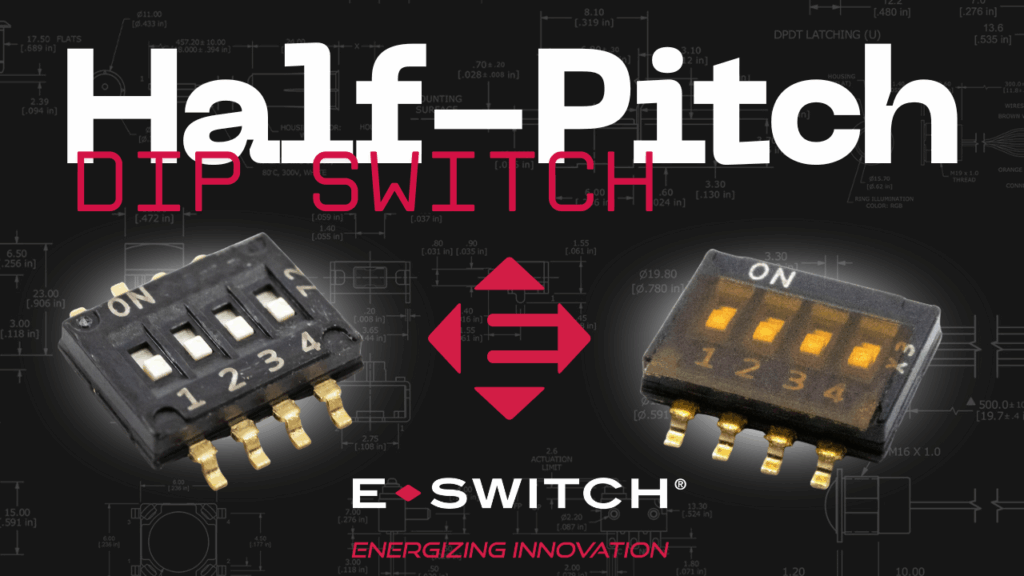
In devices where space on the printed circuit board is at a premium, half-pitch DIP switches offer benefits and features that standard-sized DIPs lack.
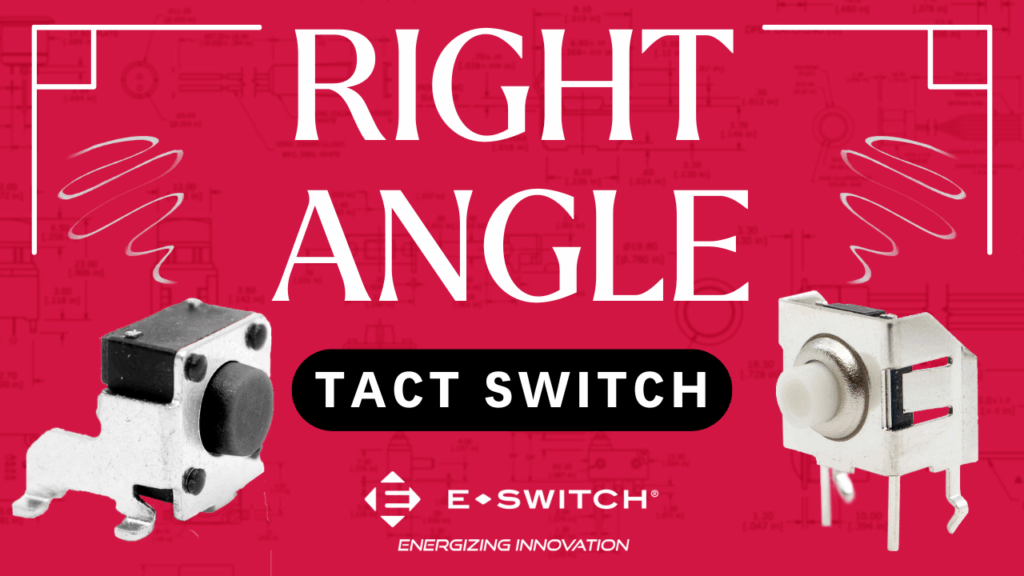
Here are the 10 most popular right angle tactile switch options from E-Switch, including surface mount (SMT), through hole (THT), dual tact and illuminated options.
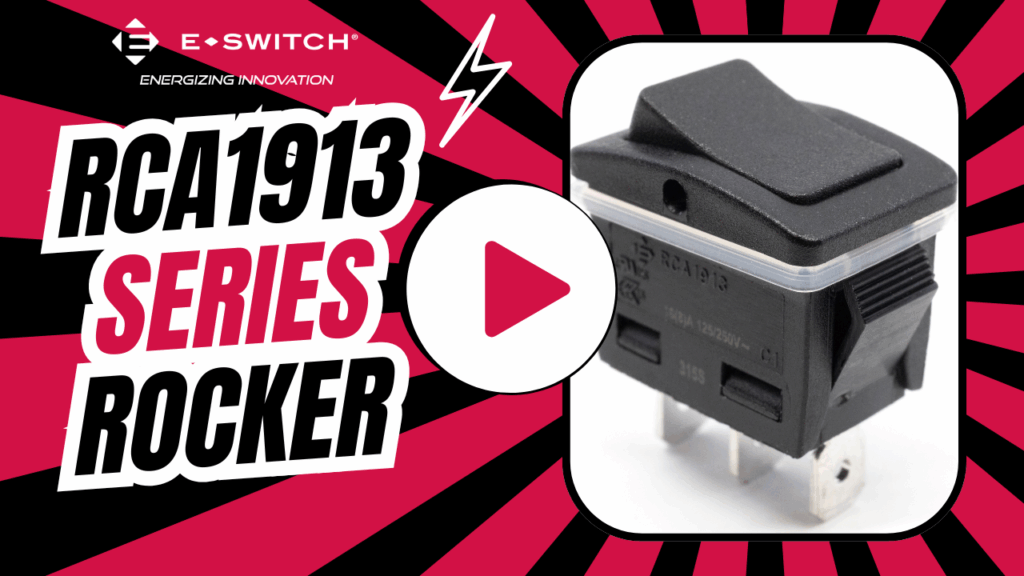
Introducing the latest innovation from E-Switch: the RCA1913 Series fully sealed, power-rated rocker switch. Watch the video, view the data sheet and configure your own!
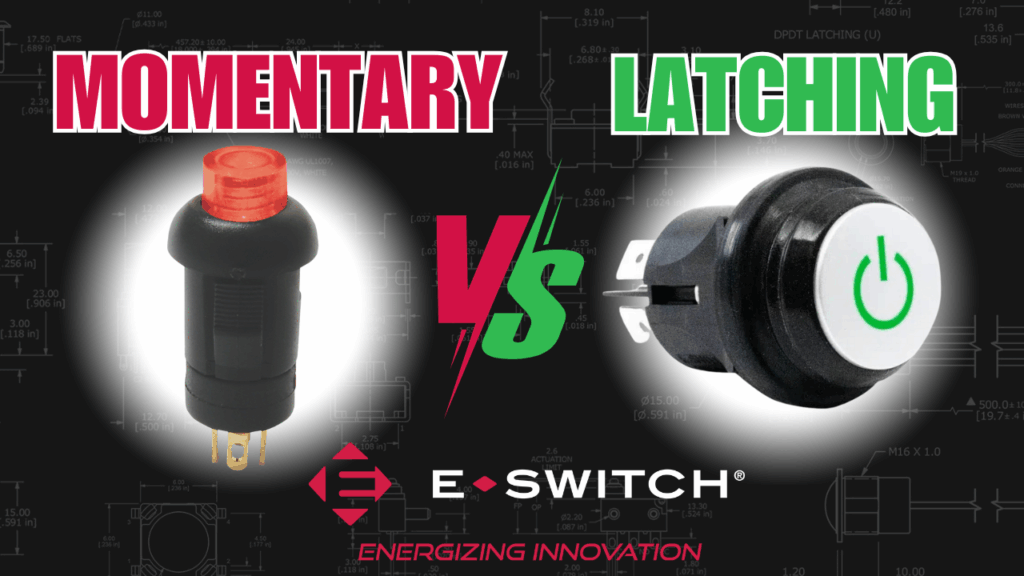
Many switches come with both latching and momentary options, but the final application in question will determine which type of switch function is best suited to the device.